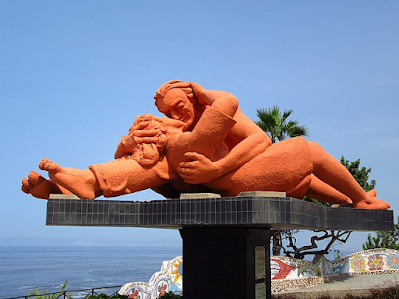World War I and Modern Art
How World War I encouraged Modern Art
Modern art was greatly influenced by World War I. Before the war, artists were already experimenting with new styles and techniques, but the war served as a catalyst for even more radical artistic movements. The devastation and chaos of the war led to artists expressing a sense of disillusionment, which can be seen in movements like dadaism and surrealism. These movements challenged traditional artistic norms and sought to reflect the chaos and uncertainty of the post-war world. Overall, World War I had a significant impact on the direction and themes of modern art.
Artists such as Christopher R.W. Nevinson from London really shows the chaos after war with his painting " The Tunnelers" originally painted in 1914 in graphite and crayon the 10 in x 8 in art is a powerful representation of the harsh realities of war. Some of the key art elements in this painting include its dynamic composition, with diagonal lines creating a sense of movement and urgency. The earth tones and grays dominate the painting, emphasizing the bleakness of the scene. The texture helps convey the ruggedness of the Tunnelers environment and the rough conditions they had to work in. These elements come together to create a powerful and evocative depiction of the experience of tunnelers during World War I.
The following painting depicts the harm and problems faced with a mustard gas attack during battle. The painting named " Gassed" by John Singer Sargent is one of the larger paintings measuring 90 in x 240 in. A oil on canvas painting made in 1919 and currently displayed at the Imperial war museum in London. The painting emphasizes the monumental impact of the war and the suffering of the soldiers. The muted color palette with earth tones and soft greens creates a somber atmosphere. The composition is carefully arranged to lead the viewers eye through the scene, highlighting the line of the wounded soldiers. The use of light and shadow adds depth to the painting and enhances the sense of drama and solemnity. I believe Sargent pays close attention to the detail, capturing the individual expressions and postures of the wounded soldiers, as well as the vastness of the landscape. The elements work together to create a powerful and moving portrayal of the horrors of war and the human cost of conflict.
 |

References:
Otto Dix. Shock Troops Advance under Gas (Sturmtruppe Geht Unter Gas Vor) from the War (Der Krieg). 1924 | Moma, www.moma.org/collection/works/63260. Accessed 5 Apr. 2024.
“Stormtroopers Advance under a Gas Attack.” Wikipedia, Wikimedia Foundation, 26 Jan. 2024, en.wikipedia.org/wiki/Stormtroopers_Advance_Under_a_Gas_Attack.
“Gassed (Painting).” Wikipedia, Wikimedia Foundation, 17 Feb. 2024, en.wikipedia.org/wiki/Gassed_%28painting%29.


"The Tunnelers" reminds me of how it felt to walk into an unlit basement when I was a child, very eerie. I like how it was partially drawn with crayon. Typically crayon art is reserved for small children, so its interesting whenever it's used in a serious or popular piece of art. It ties into the theme of ww1 very well.
ReplyDeleteThank you for sharing these artworks and your astute analysis of their significance in shaping modern art. World War 1 is fascinating because it was truly the first in an era of modern wars that utilized technology in horrific ways. These pieces truly serve as reminders of the brutality and dehumanizing effects of warfare, which provide insight into the collective trauma experienced during that time.
DeleteYou have done a great job of finding paintings that cary a strong sense of heavy emotions, very relevant to the time of world war I. I am especially glad you mentioned the size of Sargents painting, a 20 foot long painting is quite honestly unfathomable to me, but as you said it helps to convey the sheer size and effects of the war. You have unified these pieces through their dark emotions and impacts, but I think there are undertones of hope and joy in Sargent's painting that weren't quite discussed. For example in the background behind the soldiers are children playing in a field, this is a call to the service of protection that soldiers sacrificed their lives for. We are able to see through their suffering the life that their children could live. At first glance i thought the soldiers around their feet were dead, but on closer inspection they appear to be resting or sleeping, giving the painting a sense of healing and rest instead of death and trauma. Overall really engaging work and I am super glad I got to see these pieces of art!
ReplyDelete